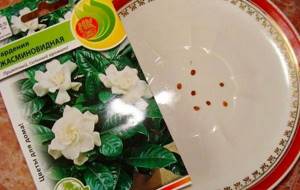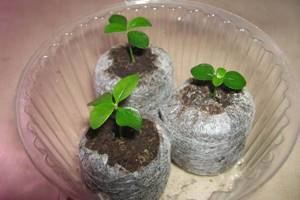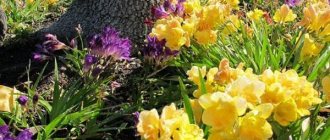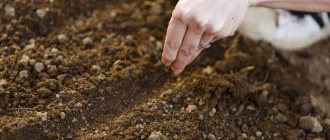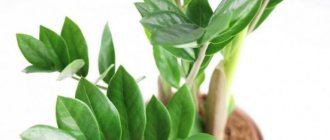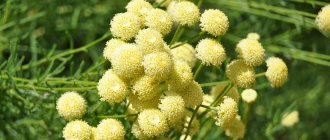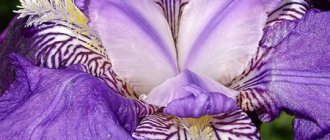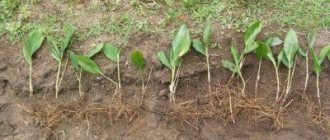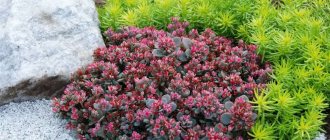Gardenia is famous for its large, snow-white flowers, similar to roses. During the flowering period from summer to autumn cold, fragrant, double buds tightly cover the stems.
The flower was named after the Scottish botanist and naturalist Alexander Garden.
Gardenia
The flower chose the subtropical zone of Japan, India and China as its natural habitat. In its homeland, the flower is grown not only for decorative purposes; medicines for various ailments are prepared from it. A decoction of the roots and fruits is used to treat wounds and skin burns, and as a rinse for tonsillitis and stomatitis.
Anti-inflammatory, hemostatic and antipyretic drugs are obtained from luxurious gardenia. Chinese medicine uses the plant for insomnia, fatigue, and headaches.
Aromatic oil extracted from gardenia flowers is in demand in cosmetology and perfumery. Flower petals from a number of plant varieties are added to tea as a flavoring agent.
Common varieties
There are about 250 plant species in the world. The following are popular among gardeners:
- Jasmine gardenia (Gardenia jasminoides) is considered the most popular home crop. The indoor gardenia flower (see photo) has dark green, shiny, dense leaves about 10 cm long and beautiful fragrant flowers. White star-shaped flowers form inflorescences. If well maintained, it will bloom all summer. In indoor conditions it grows by 50-70 cm, while in natural conditions it grows up to 1.8 m in height.
- Yellow or Gold (Gardenia carinata) has unusual flowers that can change color. The white buds bloom first. Over time, they change color to lemon yellow, at the end of flowering they turn orange. In indoor conditions, growth is slow. Several years pass until the bush turns into a graceful tree. In its homeland, this variety of gardenia grows up to 10 m.
- Citriodora (G. Citiodora) is an attractive and neat bush that has earned the love of gardeners. The small plant is decorated with lanceolate-shaped leaves with a glossy surface. Snow-white flowers are small in size, up to 2 cm in diameter. Despite its miniature size, its strong, rich aroma is not inferior to other varieties.
Description
Gardenia belongs to the madder family. The gardenia flower (pictured) is an evergreen shrub and a reduced species of tree. The strong stems of the plant are bare or pubescent. Glossy leaves with stipules are placed oppositely.

gardenia flower
Flowers of yellow or white color have a single arrangement or a shield of 4-6 pieces in an inflorescence. During the flowering period in summer or autumn, double and semi-double flowers emit a pleasant aroma. The plant is periodically pruned to form an artistic crown.
Classification, natural habitat
The botanical classification of gardenia is quite complex and not yet fully formed. The plant belongs to the Rubiaceae family. The Ixoraceae subfamily includes the Gardeniaceae tribe, where the Gardenia genus is listed.
Gardenia (lat. Gardenia) - the genus includes more than 250 species of heat-loving evergreen plants. Many scientists do not agree with this number, and believe that there are only 60 species of real gardenias. These are mostly shrubs, but there are also trees and even thorny vines among them. Representatives of the Gardenia genus live in hot and humid climates - in India, Southeast Asia, southern China, as well as in Africa and the Pacific Islands.
In ornamental plant growing, the popular species is Gardenia jasminoides, or rooting (G. jasminoides JE). The name Gardenia Augusta, i.e. Regal, considered obsolete. Some sources mention G. grandiflora (large-flowered) as a subspecies of Gardenia jasmine.

Gardenia jasminoides
Less commonly found in greenhouses are Golden Gardenia, or Kula (G. Kula), Orange Gardenia (G. citriodora), Vietnamese Gardenia, and others.
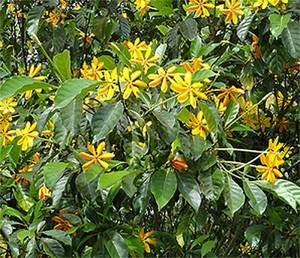
Gardenia golden
Appearance
Cape jasmine, as gardenia was called in pre-revolutionary Russia, reaches a maximum height of 1.5 m, and then only in a greenhouse. Indoor gardenia is a compact, round-shaped shrub, reaching half a meter in height and the same amount in width. It can be formed in the form of a bonsai - a dwarf tree.
The leaves are oval or broadly lanceolate, dense and shiny, dark green. Arranged alternately, singly, or in whorls of three. Thanks to its spectacular foliage, gardenia looks attractive even in the absence of flowers. There are variegated forms, for example, the variety Variegata.

Gardenia variegated
Gardenia flowers are 8-13 cm in diameter, single or in clusters of several pieces, double or semi-double. The shape resembles a rose, and the color and aroma resemble jasmine, hence the species name. A newly bloomed flower is snow-white in color and later acquires a golden hue. There are varieties with cream flowers.
Varieties
Home gardenia has a variety of forms and varieties. The period of selection was so long (starting from the 1st century AD) that scientists cannot accurately determine where the natural forms of the plant are and where the artificially created varieties are. The selection was carried out according to the size of the flower and the duration of flowering. As a result, such spectacular varieties as Vetchin, Pleno, and others (Fortuna variety) with 15-centimeter flowers were obtained. Other varieties bloom year-round, such as FourSeasons.
Gardenia varieties are also obtained by grafting. The unpretentious African gardenia thunbergium (G. thunbergium) is often used as a rootstock, and varieties of gardenia jasminoides, Tahitian, or other related species of gardenias are often used as a scion. Only those varieties that, like the rootstock, have a flower with 6 petals (among gardenias there are 5, 6, and 8-petaled forms) are suitable for grafting.
Conditions of detention
The indoor gardenia flower loves light and warmth. The plant reacts poorly to excess moisture and sudden changes in temperature. The plant must be given a permanent place, because even small movements of the pot and turning the plant lead to the falling of flowers and leaves. Direct exposure to sunlight should also be avoided so as not to lose flower buds.
A western or eastern window is suitable for gardenia. In winter, additional lighting will be required, which is placed at an interval of at least 1 m from the plant. Buds react poorly to lack of lighting.

Gardenia jasminoides
In summer, gardenia will appreciate being in the garden or on the balcony. With the onset of cold nights, you should avoid overcooling the root system and bring the flower indoors.
In spring and summer, the conditions for keeping gardenia are quite warm - not lower than +22°.
In winter, gardenias need +16-20° to set flower buds. If there is excess heat in winter, gardenia will not produce flowers, and at lower temperatures, the roots may rot. It is important to maintain the same air and soil temperatures.
Lighting
Bright. Very photophilous. However, it requires protection from direct midday sun in summer. Due to such special requirements, the pot with the plant is placed in the summer - on the western or eastern windows, and in the winter - on the southern window sill. But Gardenia does not like constant, especially sudden, movement. It freezes in growth for some time, and may even lose color or leaves.
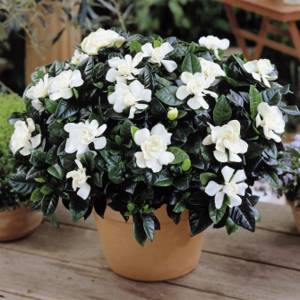
Important! These are the subtleties of caring for indoor Gardenia flowers. On the one hand, they are demanding of care, on the other hand, obsessive attention “irritates” them.
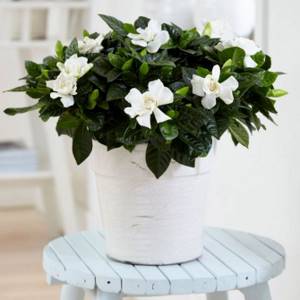
Watering and humidity requirements
Maintaining an optimal humidity regime for gardenia is the basis for flowering and beauty. The soil is constantly kept moist, avoiding drying out. In winter, water two days after the top soil layer has dried.
The water is used warm and slightly acidified every 2 weeks by adding 3 drops of lemon juice per 1 liter of water.
Watering with acidified water is especially important when planting a bush in universal soil. To create the required acidity, water for irrigation is infused with peat or iron sulfate is added to the water (0.5 g per 1 liter of water).
Violation of the watering regime leads to yellowing of the leaves, and new leaves grow small. At the same time, moist soil should provide oxygen access to the roots. During the growth and budding phase, indoor gardenia flowers need high air humidity. To do this, place containers with water near the flowerpot or use a very wide tray with a large evaporation area, which is filled with moss.
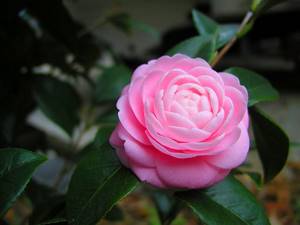
Gardenia pink
Don’t forget about regular spraying with warm water twice a day. During the flowering period, spraying is stopped and replaced by wiping the leaves with a damp cloth. Drops falling on an open flower cause the formation of brown spots that disrupt the decorative effect. Adult bushes are fed every week during the warm period.
Plant nutrition is chosen with a high acidity level and without calcium. Young seedlings are fed with organic matter and mineral fertilizers 2 times a month.
Trimming
After flowering, sanitary pruning of the bush is carried out. Weak and diseased cuttings and stems with faded flowers must be removed. The shoots that thicken the bush are shortened by half or 2/3.
Formative pruning begins by shortening the central stem by 10-15 cm. The lateral shoots are trimmed. After pruning, the plant will begin to tiller.
After decorative pruning, cut healthy cuttings are used for rooting.
During the growing season, the upper parts of young cuttings are pinched to improve tillering and stimulate the formation of flower buds.
Gardenia propagation
The gardenia flower (pictured) is propagated by cuttings and seeds.
To propagate the flower, semi-lignified cuttings 10 cm long are used. The propagation process is planned for spring or early autumn.
The prepared cutting is immediately placed in moist peat soil with sand and covered with a jar. For better rooting, before planting, the cuttings are immersed for several hours in a solution of potassium permanganate or a growth and root formation stimulator.

Gardenia yellow
The container with seedlings is kept at t=25° .
The cuttings are periodically ventilated and sprayed. Rooting will be indicated by the appearance of new shoots. This will happen in about a month. The grown young plant is moved to the main pot. After the plant has adapted, pinch the top to form a beautiful bush.
Pests, diseases
Among the insect pests that attack the flower are scale insects, spider mites and mealybugs. A sick plant looks depressed, the leaves turn yellow and fall off, the buds turn black and the flowers fall off. In case of infection, the plant is treated with a plant-based insecticidal preparation that is safe for humans. In case of severe damage, spraying is repeated at intervals of 7 days.
Often flower growers have to observe the fall of the formed buds. The reason is a violation of the temperature regime during the dormant period, errors in watering and changes in the position of the flower relative to the light.
The change in leaf color to yellowish occurs due to the use of hard water and keeping it at low temperatures. When the leaves turn yellow, gardenia is irrigated with iron sulfate.
If interveinal chlorosis and yellow stains appear on the leaves, you need to pay attention to the composition of the soil. It should be sour. In the absence of annual replanting, the top layer of soil with white calcium deposits is changed once a year.
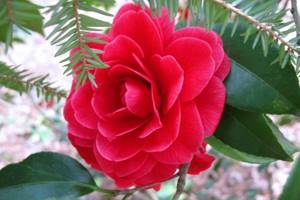
Gardenia red
Weak flowering or its absence indicates the content of lime in the soil and insufficient acidity. Flowering does not occur at low temperatures, insufficient lighting, when the air in the room is dry.
Planting and propagation
Gardenia feels great in bright but diffused light. The current sides of the house are western and eastern. If the windows face south, you should take care of shading; the northern part of the house, on the contrary, will require additional lighting.
Take light, but acidic soil for planting. To do this, take vermiculite, leaf, peat, turf, coniferous soil and combine in equal parts. Only all components must be disinfected with steam or in the oven to prevent plant disease. You can use purchased soil “for azaleas”, there will be less hassle. Gardenia propagates vegetatively and by seeds.
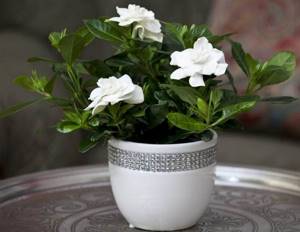
Cuttings . The best option for preparing cuttings is during crown trimming. Or prepare cuttings before flowering. From the side shoots, cut off a branch with several buds; there should be at least two leaves. They will help feed during rooting. The cuttings take root in several ways.
- In water. Prepare a small glass of water and dissolve activated carbon in it. Cover the glass with the stem with a plastic bottle. Pre-cut the bottom.
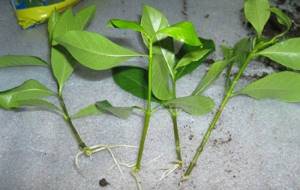
- In a peat tablet. When purchasing a tablet, pay attention to the acidity; for gardenia, pH is 4.00-5.5. Dip the swelling tablets into the liquid. After swelling, squeeze and place one cutting in the hole.
Place in a plastic glass and cover with a jar. The signal that the gardenia has taken root will be the roots sticking out through the tablet. The film from the tablet is carefully trimmed and transplanted into the ground. This is the most reliable rooting method for gardenia, since its root system is very fragile.

- In the substrate. Before planting, immerse the cuttings in water, then in a rooting stimulator and plant in peat soil. If there is no stimulant, you can dip it in crushed activated carbon.
Cover with a plastic bag to create a favorable microclimate. Place the containers on foam plastic. Pay attention to one feature: the cuttings are not ventilated until rooting.
On the contrary, the package is sealed tightly with tape. The second prerequisite is temperature. It should be 24 degrees C for soil. The appearance of new leaves will be a signal that the cutting has taken root. As soon as it reaches 15 cm, the bush is ready for transplanting. Cuttings planted in winter will bloom in August, summer plantings only next year.

- Seeds. Planting material for sowing indoor gardenia should be freshly harvested; germination rate decreases every year. If you buy seeds from a store, pay attention to the time of collection. The seed method of gardenia allows them to better adapt at home.
Soak the seeds in warm liquid with the addition of one drop of an immunostimulant, for example, epin, zircon for a day. You can grow gardenia from seeds in soil and peat tablets.
If sowing is done in tablets, there will be no need to pick them up and disturb the root system. In both cases, cover the containers with a bag. The soil temperature is maintained at 22-25 degrees C.
As soon as two true leaves appear, they should be planted in separate pots. Replanting should be done together with a clod of earth. Maintain light conditions.
The first 14 days are at least 18 hours, the next 14 days - 14, then - 8. Gardenia will bloom only for the 5th year, but it will feel great at home.
